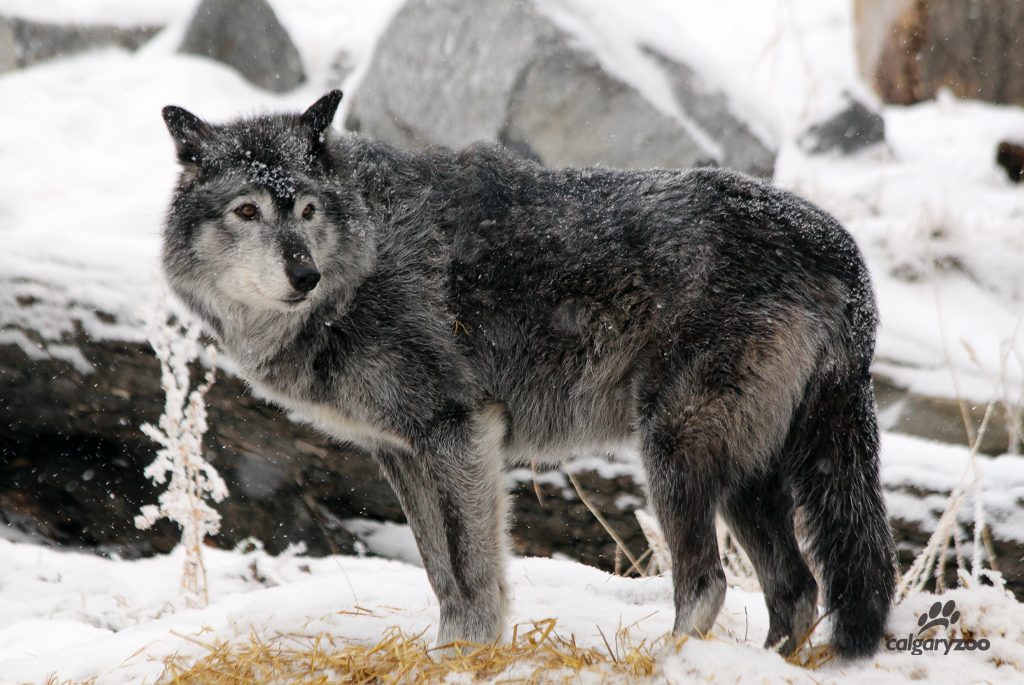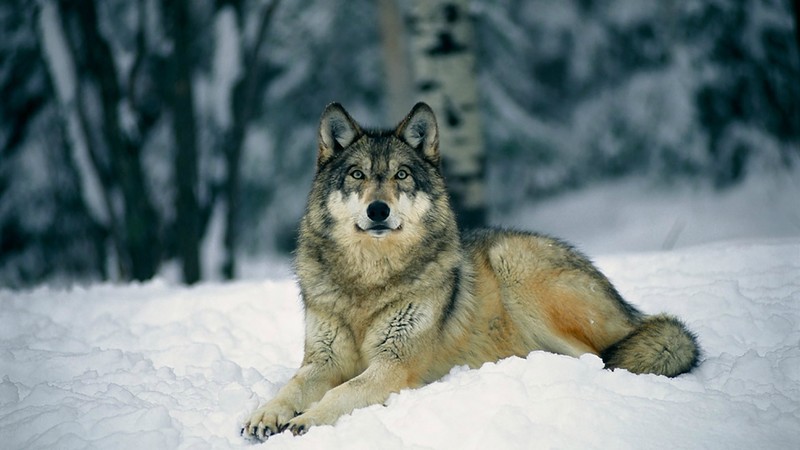The Grey Wolf

The gray wolf or grey wolf is also known as the timber wolf or western wolf . Scientifically it called Canis lupus. It is a canine native to the wilderness and remote areas of Eurasia and North America. It is considered to be the largest extant member of its family, with males averaging 43–45 kg (95–99 lb) and females 36–38.5 kg (79–85 lb). Like the red wolf, it is distinguished from other Canis species by its larger size and less pointed features, particularly on the ears and muzzle. Its winter wool is long and bushy and predominantly a mottled gray in color.It can also be nearly pure white, red, and brown to black also occur. In 2005, 37 subspecies of C. lupus were recognised by MSW3.

The gray wolf is one of the world's best-known and most-researched animals .Possibly more books written about it than any other wildlife species. It has a long history of association with humans, having been disdained and hunted in most pastoral communities because of its attacks on livestock .Conversely it is also respected in some agrarian and hunter-gatherer societies. Although the fear of wolves is diffusive in many human societies, the majority of recorded attacks on people have been attributed to animals suffering from rabies. Non-rabid wolves have rarely attacked and killed people, mainly children, because wolves are relatively few, live away from people, and have developed a fear of humans from hunters and shepherds.

The evolution of the wolf took place over a geologic time scale of 800,000 years, transforming the first Middle Pleistocene wolf specimen that is acknowledged as being morphologically similar to Canis lupus into today's dog, dingo and gray wolf. Ecological factors including habitat type, climate, prey specialization and predatory competition will coprehensively influence the wolf's genetic population structure and cranio-dental plasticity. Wolves went through a population bottleneck 20,000 years before present (YBP), which shows that many wolf populations had gone extinct at a time that coincided with the Last Glacial Maximum and the expansion of modern humans worldwide with their technology for capturing large game. The domestic dog is the most widely enormous large carnivore and a descendant from one of those now-extinct wolf populations.
.jpg)
The gray wolf's expressive behavior is more complicated than that of the coyote and golden jackal, as necessitated by its group living and hunting habits. While less gregarious canids commonly possess simple repertoires of visual signals, wolves have more varied signals that subtly inter grade in intensity. When neutral, the legs are not toughened, the tail hangs down loosely, the face is smooth, the lips untensed, and the ears point in no particular direction.
Photo credit Google
they are so beautiful and scary
Downvoting a post can decrease pending rewards and make it less visible. Common reasons:
Submit
But they are cool when they are calm....
Downvoting a post can decrease pending rewards and make it less visible. Common reasons:
Submit